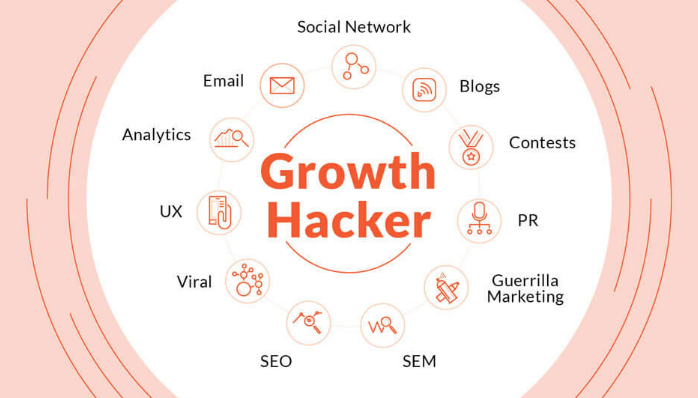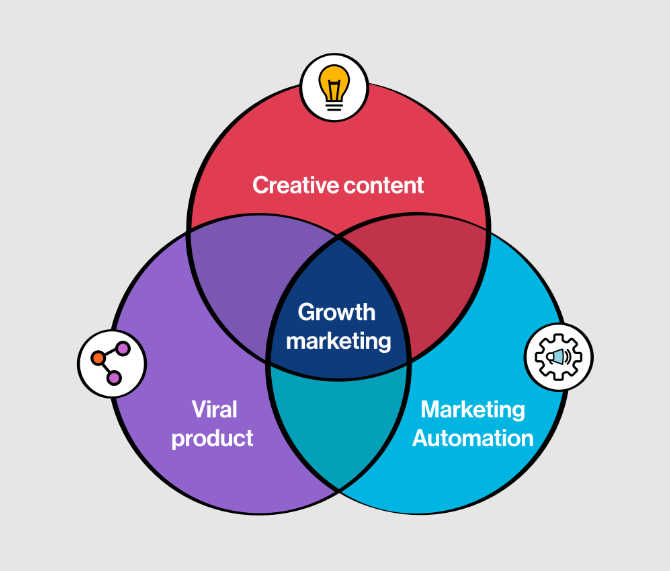In today’s fast-paced business world, rapid expansion is crucial for staying ahead of the competition. Discover effective growth hacking techniques—a blend of marketing, technology, and creativity—to accelerate business growth.

In this article, we’ll explore various growth hacking techniques that can help your business achieve rapid expansion.
What is Growth Hacking?
Growth hacking is a term coined by Sean Ellis in 2010, describing a data-driven approach to scaling businesses quickly. Unlike traditional marketing, growth hacking focuses on low-cost and innovative alternatives to traditional marketing strategies, emphasizing rapid experimentation across marketing channels and product development.
Why Growth Hacking is Essential for Businesses
Growth hacking allows businesses to grow quickly by focusing on what works best and scaling those strategies. This speed and efficiency can be the difference between a business that thrives and one that struggles to keep up.

Traditional marketing can be expensive, but growth hacking uses creative, low-cost methods to achieve high returns. This makes it an ideal approach for startups and small businesses with limited budgets.
Setting the Foundation for Growth Hacking
Before implementing growth hacking techniques, it’s essential to establish clear, measurable goals. This provides direction and allows you to track progress effectively. Knowing your target audience is critical for growth hacking success. This involves detailed market research to understand their needs, preferences, and pain points.
Email Marketing Strategies
An email list is a valuable asset for growth hacking. Building a substantial list involves offering value to your audience, such as free resources or exclusive discounts. Well-crafted emails can drive engagement and conversions. Focus on creating personalized, relevant content that resonates with your audience.

| Strategy | Explanation |
| Segmentation | Segmenting your email list based on demographics, behavior, or purchase history allows you to send targeted messages that are more likely to resonate with each group, resulting in higher engagement and conversion rates. |
| Automated Campaigns | Implementing automated email campaigns, such as welcome series, abandoned cart reminders, and post-purchase follow-ups, ensures timely and relevant communication with subscribers, enhancing their overall experience. |
| A/B Testing | Conducting A/B tests on different email elements like subject lines, content, and CTAs helps identify what resonates best with your audience, allowing you to optimize future campaigns for better performance. |
| Mobile Optimization | Ensuring your emails are mobile-friendly is crucial, as a significant portion of users check emails on their mobile devices. This involves using responsive design and concise, visually appealing content. |
| Engaging Subject Lines | Crafting compelling subject lines that grab attention and entice recipients to open the email can significantly improve open rates. Personalization and urgency often help make subject lines more effective. |
Content Marketing for Growth
Regular blogging and effective SEO practices can drive organic traffic to your website. This involves keyword research, high-quality content creation, and link-building strategies. Collaborating with influencers and guest posting on popular blogs can expand your reach and build credibility in your industry.
Paid Advertising Strategies
Pay-per-click (PPC) campaigns can drive targeted traffic to your website. These campaigns can be optimized to achieve high conversion rates with a relatively low budget. Retargeting ads help in re-engaging visitors who have previously interacted with your website but didn’t convert. This increases the chances of conversion.
Referral Programs
A well-designed referral system can incentivize your existing customers to refer new customers. This involves offering attractive rewards and making the referral process easy. Offering incentives, such as discounts or freebies, can motivate customers to participate in your referral program, driving new customer acquisition.
Incentives for Referrals: Offer discounts or freebies to motivate customers to refer others.
Easy Referral Process: Simplify the referral steps to encourage more participation.
Trackable Referrals: Use referral codes or links to monitor and reward successful referrals.
Double-Sided Rewards: Provide benefits to both the referrer and the referred to increase program attractiveness.
Promotion of the Program: Actively promote your referral program through various channels to maximize awareness and participation.
Measuring and Analyzing Growth
Tracking key metrics such as conversion rates, customer acquisition cost, and lifetime value is crucial for evaluating the success of your growth hacking efforts. Continuous improvement is essential for growth hacking. Use data insights to refine your strategies and improve performance over time.

Conclusion
Growth hacking offers a unique and effective approach to rapid business expansion. By leveraging creativity, data analytics, and a deep understanding of your audience, you can achieve significant growth without the hefty costs associated with traditional marketing. Implementing the techniques outlined in this article can set your business on the path to rapid and sustainable expansion.
Read more : How Privacy Laws Influence Digital Marketing Strategies
FAQs
Growth hacking is a data-driven approach to achieving rapid business growth through innovative and low-cost marketing strategies.
Growth hacking is essential for small businesses as it allows for rapid and cost-effective growth, helping them compete with larger enterprises.
Tools like Google Analytics, Mixpanel, and Hotjar are useful for data collection and analysis, while automation tools like HubSpot and Mailchimp streamline marketing efforts.
Focus on creating engaging, valuable, and visually appealing content that resonates with your audience and encourages sharing on social media platforms.


